Manual overclocking
Now we come to what Nvidia prohibits the board partners via firmware, but leaves the customer open as manual overclocking with suitable software (of course). However, what is not possible to protect your own GeForce GTX 1080 with tools is a voltage increase as small as you could put on top of the other Pascal cards.
Important also: We overclock, also due to a thermal limit of the reference cooler and the fact that the chip is (randomly) probably too good, only the board partner card. However, we have planned two approaches to this.
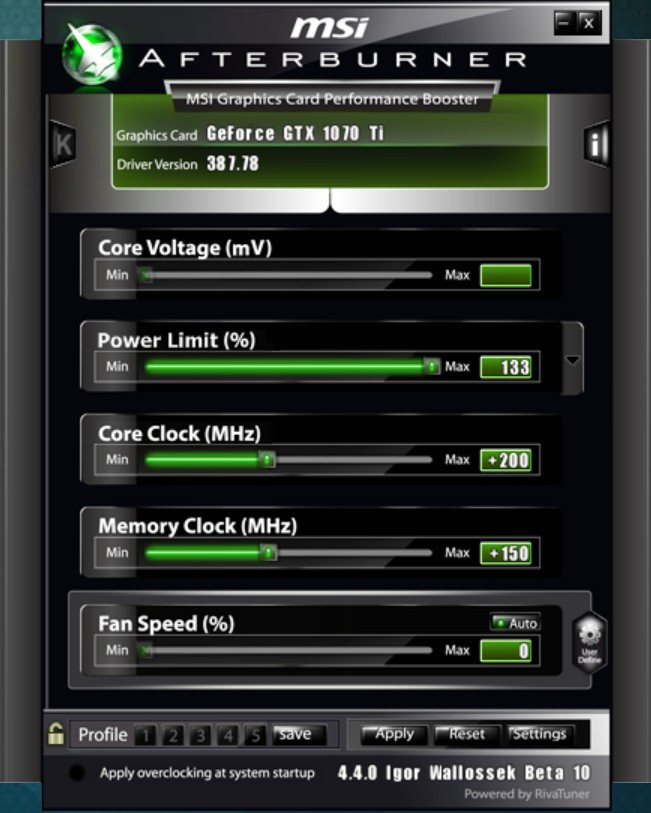
Since the MSI GeForce GTX 1070 Ti Titanium has a theoretical power target of 239 watts, we want to see where we can get to with the normal fan curve without it getting significantly louder and on the other hand also test at 100% fan speeds how high the Boost can still accompany.
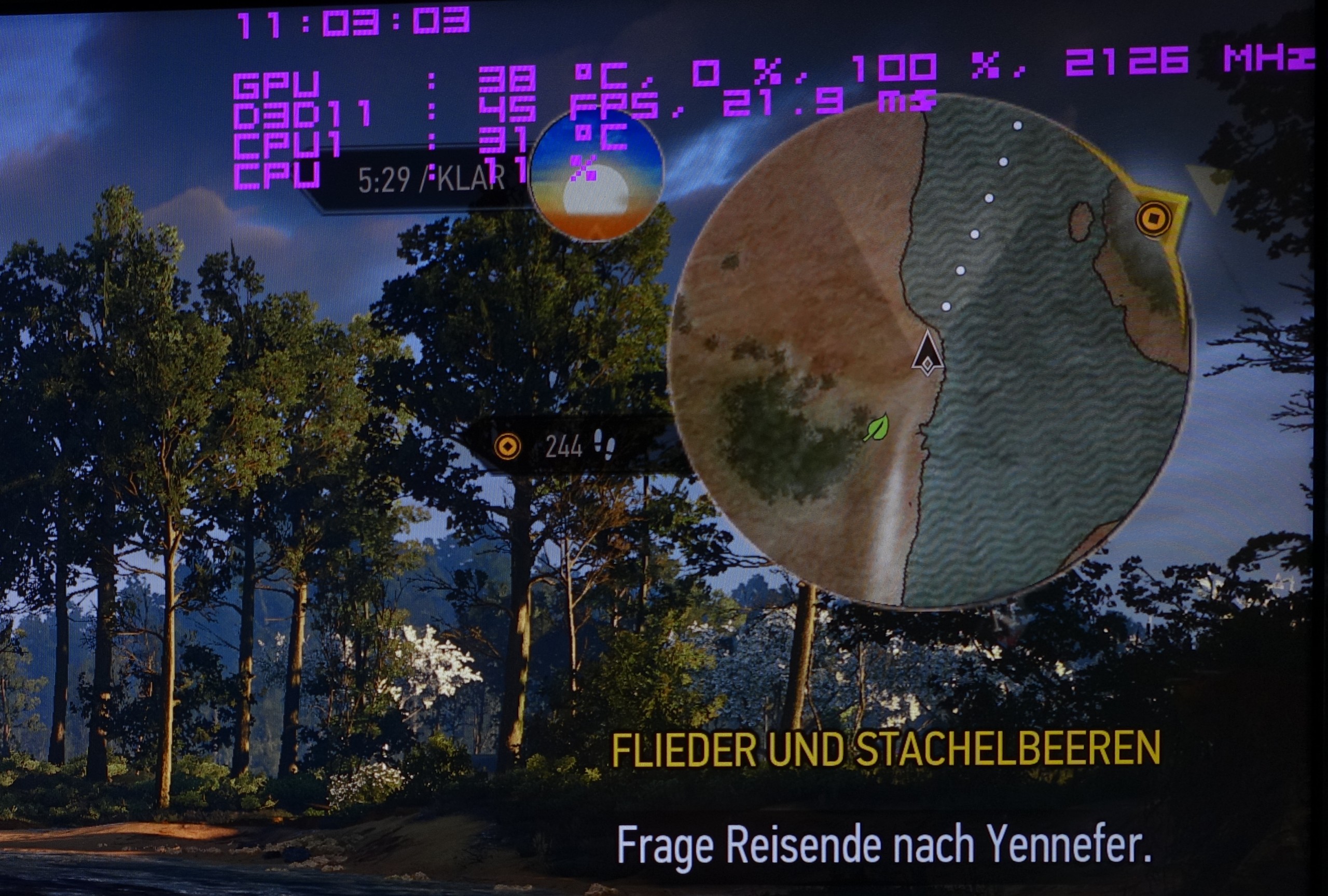 Below 42°C….
Below 42°C….
The OC behavior of the other board partner cards is similar, but all cards with a power target of "only" 120% are clearly at a disadvantage, since for the 2050 MHz you already have to set the fans to the maximum.
| Map |
Power Target |
Fan |
Achieved Boost clock (after 30 minutes) |
|---|---|---|---|
| Nvidia GTX 1070 Ti FE |
120% | 100% | 2063 MHz |
| MSI GTX 1070 Ti Titanium |
133% | Car | 2050 MHz |
| 133% |
100% |
2101 MHz | |
| Gigabyte GTX 1070 Ti G1 Gaming |
120% | 100% | 2063 MHz |
| Gainward GTX 1070 Ti Phoenix GS |
120% | 100% | 2050 MHz |
| iGame GTX 1070 Ti Vulcan X Top | 134% | Car | 2063 MHz |
| 134% |
100% |
2114 MHz |
Of course, we also have the whole thing ready again as a curve, which shows us very well where the boost clock is lost due to the rising temperatures:
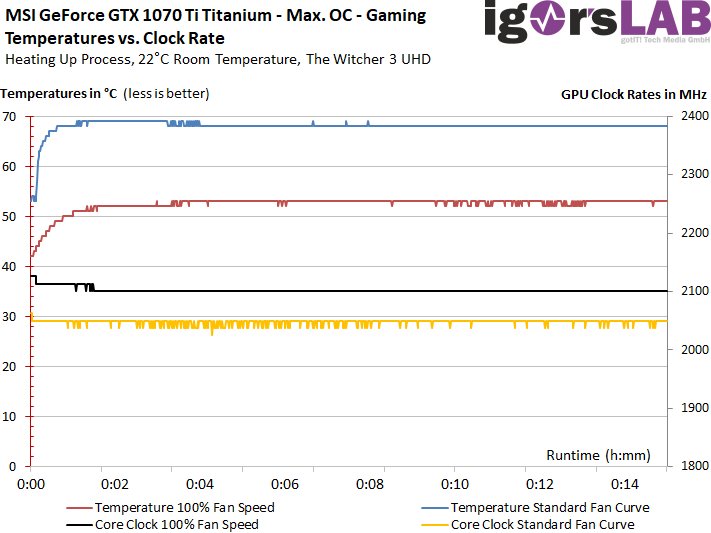
We have also recorded the corresponding voltages, whereby we see that the card is not limited by the recorded power (here 6 to 8 watts more would have been possible), but mainly by the voltage.
In the end, it is almost constant 1.05 volts, i.e. exactly one voltage step below the maximum voltage of 1,062 volts set by Nvidia, which only at 100% fan speeds provide a whopping 2126 MHz for a short time, as long as the chip temperature remains below 42°C.
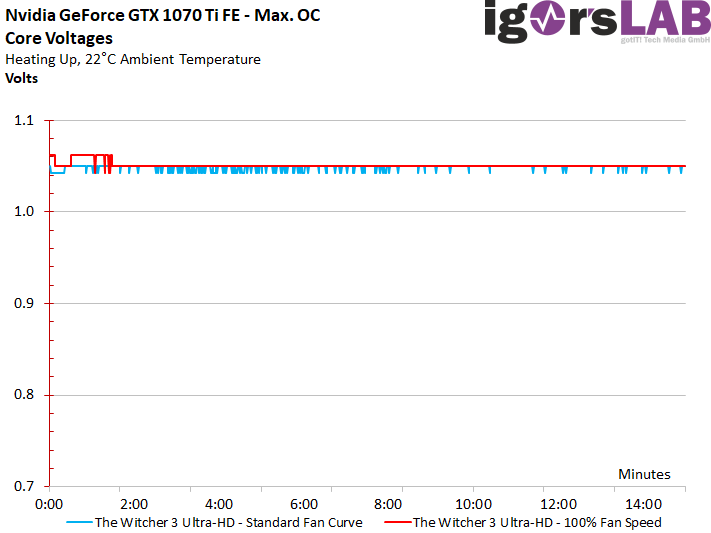
Thermal image analysis
Of course, we also want to compare how well the map copes with the resulting waste heat. After all, more than 50 watts more of electrical power than heat must be dissipated. For this purpose, we compare the operation of the card with the normal fan curve ex works and the full propeller döhnung, which, however, with less than 43 dB(A) still remains quieter than many graphics card floors in the past with normal clocking.
The 68°C at 2050 MHz is not something that could kill the board. The 85°C of the memory is also still 10°C below the permitted limit. The 95°C of the voltage converters are just as justifiable with a clear conscience, only it should not get warmer now. But since we measured in a closed housing, this fits.
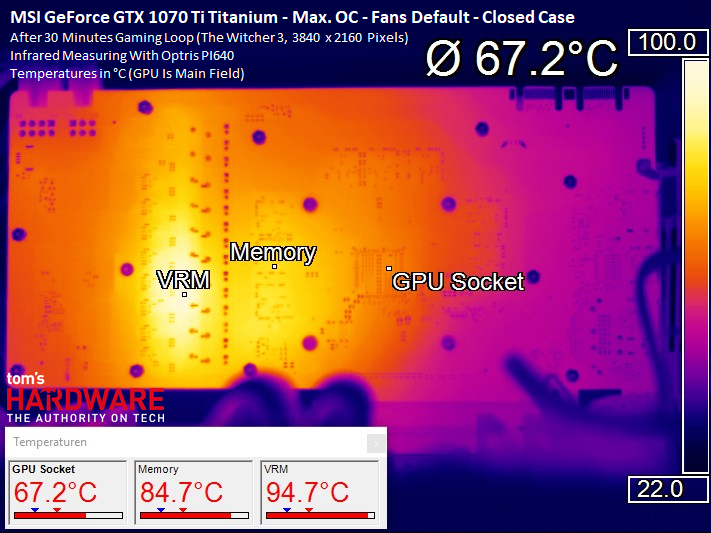 |
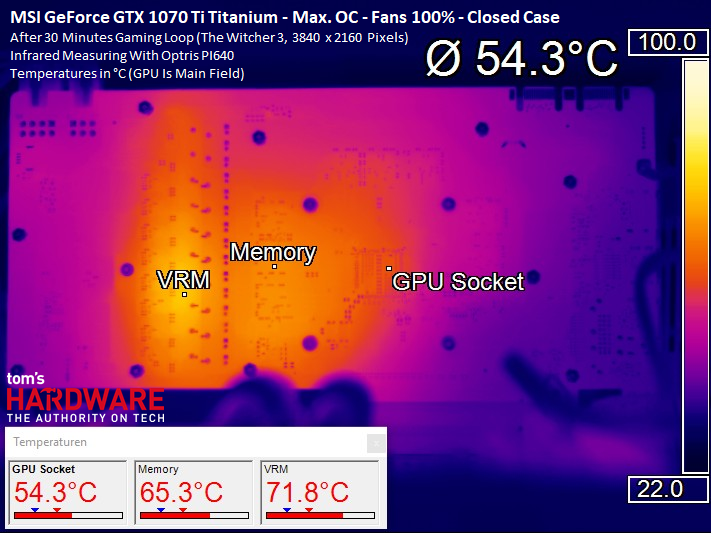 |
The full wind strength leaves the map almost frosted. Here you can also venture a continuous operation at a whopping 2.1 GHz, because it will definitely not fail due to the temperatures.
The pitfalls of overclocking
But if you are wondering why we do not publish detailed performance comparisons despite our overclocking success, we have to bring it back to Earth a little bit.
We also deliberately compared cards of the same model again and found extremely different chip qualities. Thus, the same settings provoked sporadic crashes on a second MSI card with 133% Power Target and a preset of 200 MHz. At 150 MHz+ we reached a whole 2 GHz with this copy and then only if the fans ran at 100%! This difference of at least 100 MHz is large enough to doubt universal benchmark results.
Another limiting factor is memory. Even with 150 MHz increase, memory remains the limiting factor in many situations. Depending on the game, memory usage and usage can be gained up to 8% performance at 2050 Mhz through a comprehensive OC, but in other situations a maximum of 2-5%. This, too, prevents us from making exemplary statements that could later be regarded by readers as a blanket statement.
We simply need more samples to better and more objectively assess the overclocking qualities of the GeForce GTX 1070 Ti. You can be lucky or unlucky with your card and that's why we just don't want to raise any exaggerated expectations at this point. However, we will put the respective cards through their paces in individual reviews later on. Then we are all smarter.
- 1 - Übersicht und Testsystem
- 2 - Testsystem und -methodik
- 3 - Im Detail: Nvidia GeForce GTX 1070 Ti FE
- 4 - Im Detail: MSI GeForce GTX 1070 Ti Titanium
- 5 - Ashes of the Singularity: Escalation (DirectX 12)
- 6 - Battlefield 1 (DirectX 12)
- 7 - Destiny 2 (DirectX 11)
- 8 - Doom (Vulkan)
- 9 - Metro: Last Light Redux (DirectX 11)
- 10 - Middle-earth: Shadow of War (DirectX 11)
- 11 - Rise of the Tomb Raider (DirectX 12)
- 12 - Tom Clancy’s Ghost Recon Wildlands (DirectX 11)
- 13 - Tom Clancy’s The Division (DirectX 12)
- 14 - Warhammer 40,000: Dawn of War III (DirectX 11)
- 15 - The Witcher 3 (DirectX 11)
- 16 - Leistungsaufnahme im Detail
- 17 - Temperaturen und Takt
- 18 - Übertaktung
- 19 - Lüfterdrehzahlen und Geräuschentwicklung
- 20 - Zusammenfassung und Fazit
















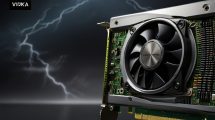
















Kommentieren